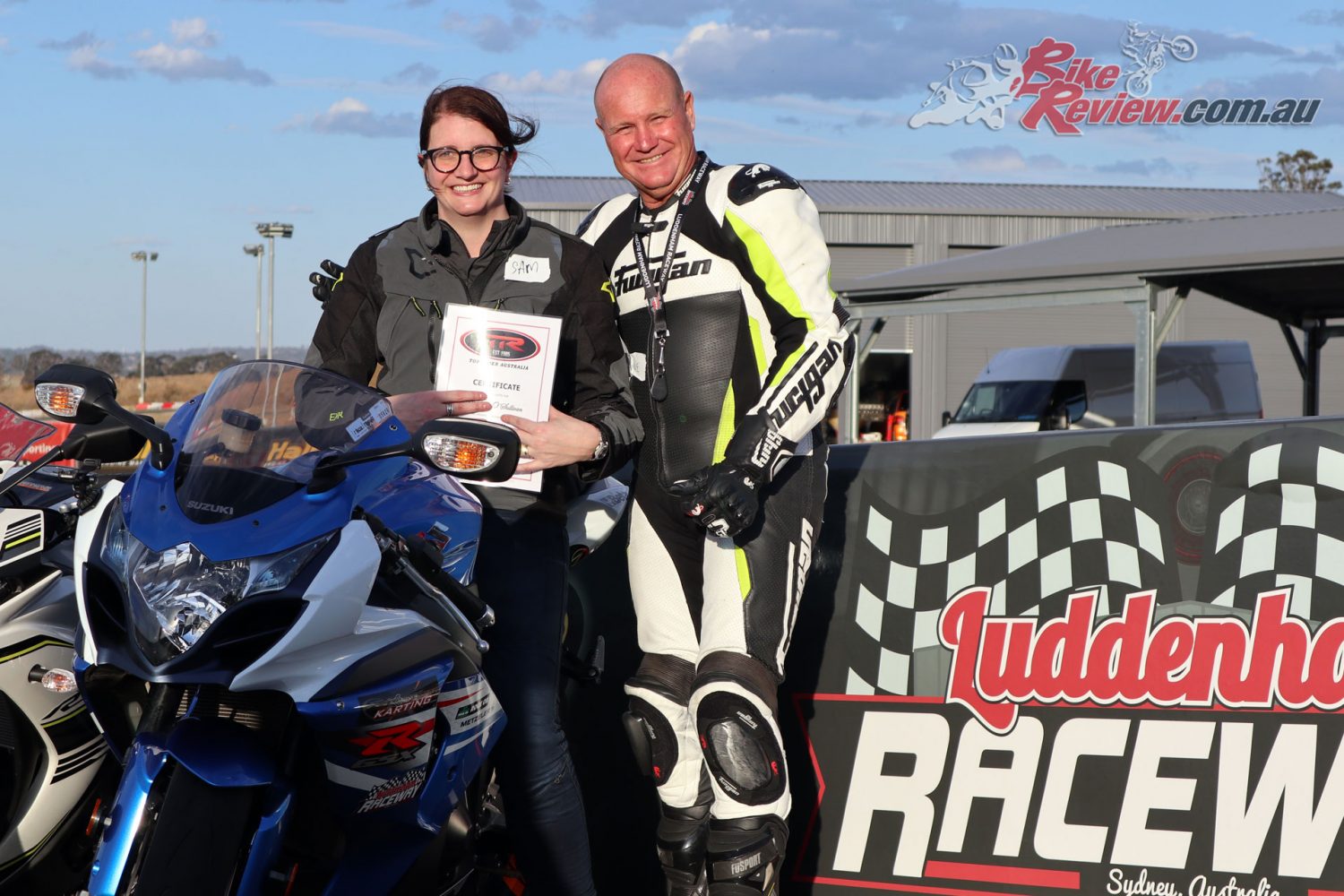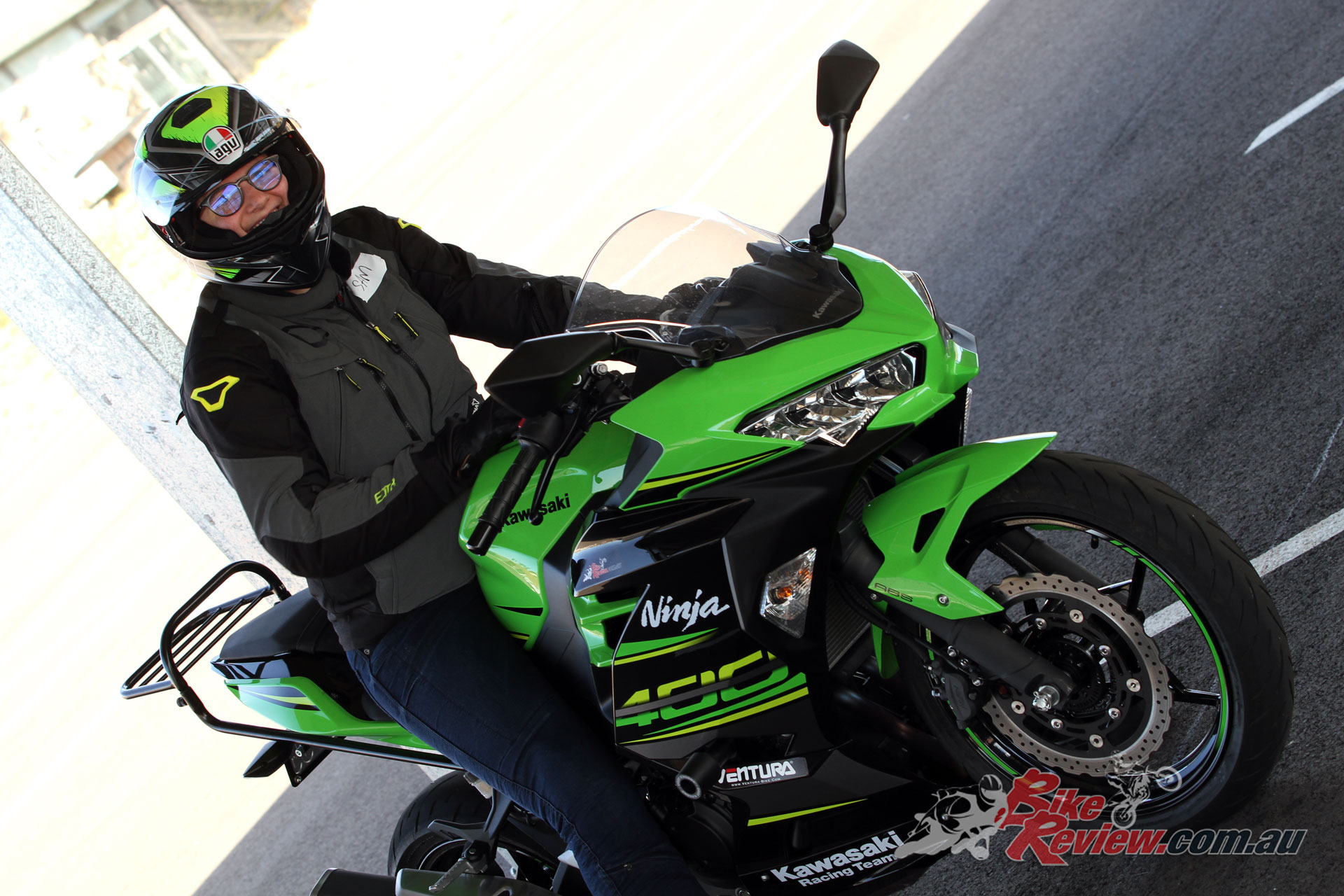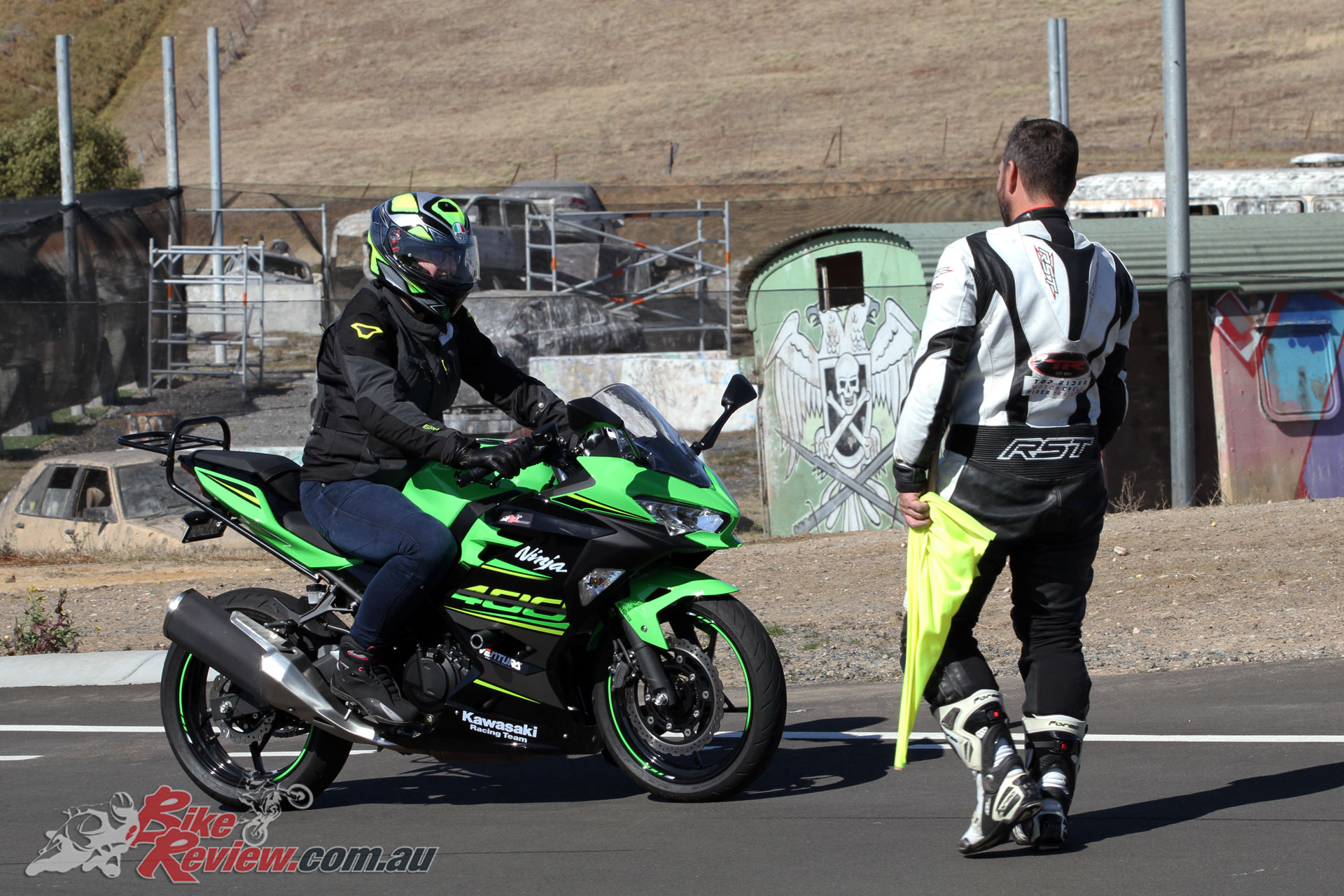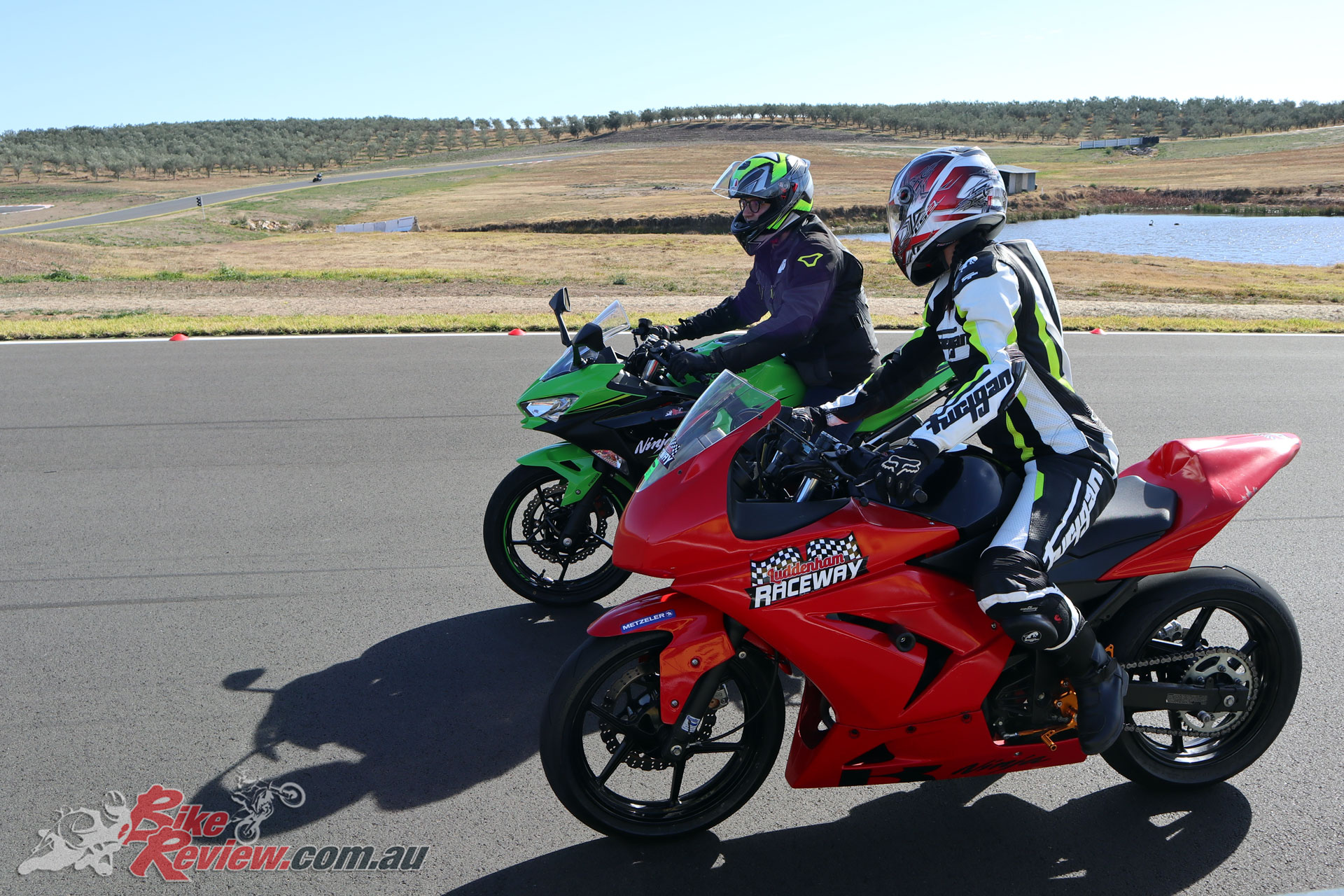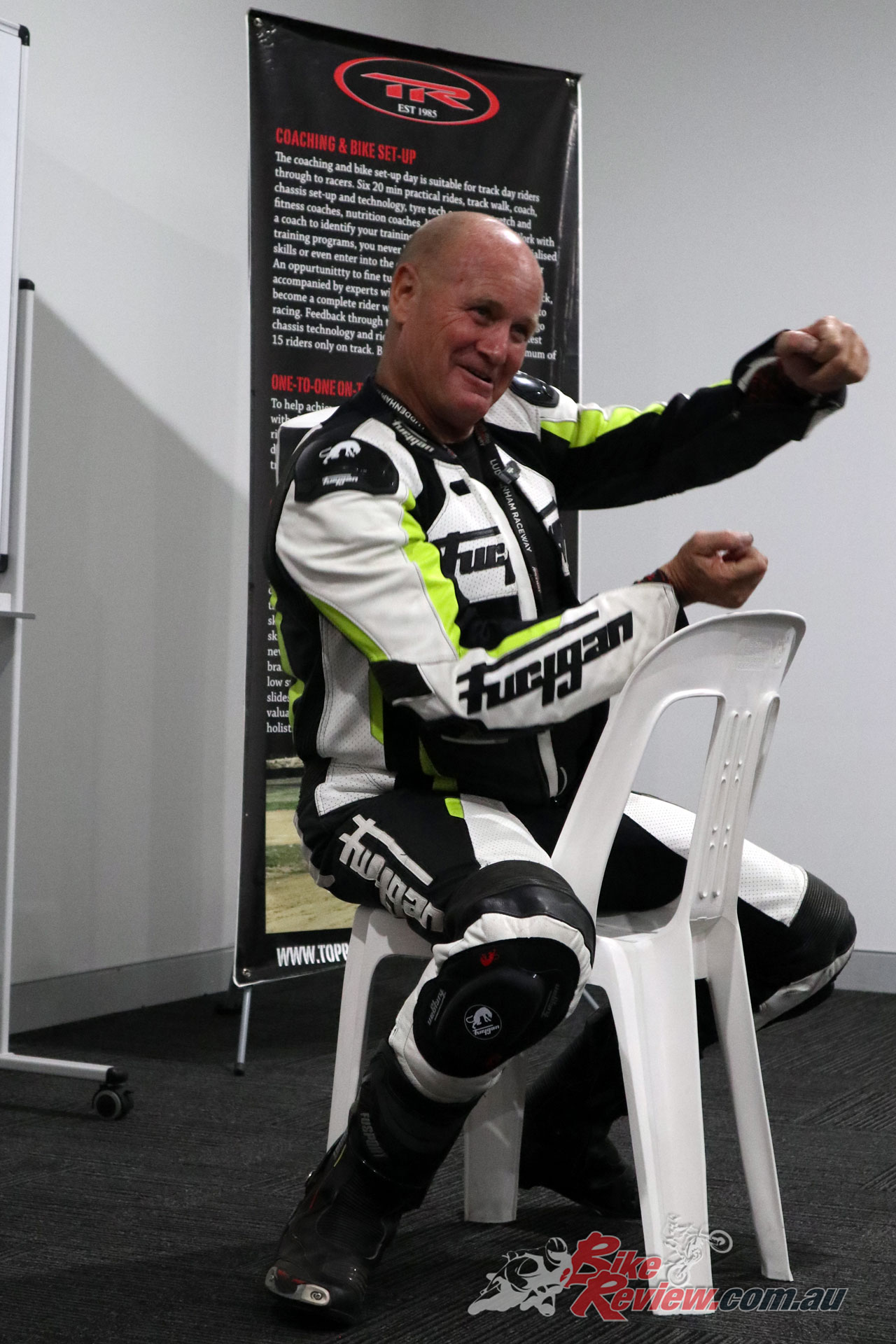Samantha recently took part in the Top Rider Advanced Level 1 rider training course at Luddenham Raceway on our Long Term Ninja 400, and was amazed how much she learnt. Words: Samantha Kimber, Images: Kris Hodgson
I recently had the opportunity to take part in Top Rider Australia’s Advanced Rider Training Course – Level 1. This day-course was held at Luddenham Raceway in Western Sydney on their track and is the first level of the Advanced courses suitable for all riders.
The purpose of the course is straightforward – to become a better, safer motorcyclist, something particularly important to me, as someone who is transitioning from scooter to motorcycle!
Initially I was worried that this course might be too advanced for me but I came to realise all riders are in the same boat to an extent. As Bernie Hatton, Director and Principle Instructor at Top Rider says, “You don’t know what you don’t know.” Check out the ‘Four stages of competence’ if you’re interested in the thought process behind this statement.

Bernie Hatton and all the staff are very approachable at Top Rider, and can ensure the practical matches your skill level
I was lucky enough to have the Kawasaki Ninja 400, BikeReview.com.au’s long-termer, to complete the course on. You can also check out my review as a new rider: Long Term: Ninja 400 First Time Rider Impressions
Level 1 of this course focuses on braking and cornering. We started the day with an overview of what would be covered and what to expect, followed by a guided session out on the track to become familiar with where we’d be spending much of the day couple of hours, punctuated by classroom sessions.

The course started with a guided lap of the track to get to know the correct lines, followed by braking exercises
The first exercise we explored was braking, with a number of different approaches – rear only, front only and then both. It might sound simple but the exercise is actually about mastering these skills, feeling how the bike responds – feeling the stroke of the forks and the grip of the tyres, and understanding how this applies to all riding.

Braking exercises up the straight included using front, rear and both brakes and testing braking distances and weight transfer
Bernie makes you aware of how each brake can be used safely and how to control for dry and wet, which again sounds simple but adds a lot more depth to how you think about these facets of your riding, especially if you don’t actively think about or understand them.
We also had a morning tea break, with snacks and drinks provided after the first track session, helping keep everyone refreshed, while lunch is fully catered for, so there’s really no need to bring anything.

In the classroom everyone had the opportunity to see how a gearbox and clutch works to better understand changing gears and using the clutch.
This was followed by a throttle and gearing exercise, in which we covered off understanding how gearboxes work – including looking at a partially disassembled gearbox and clutch in the classroom – and how to use the clutch lightly or not at all to move up and down gears.

Throttle and gearing exercises around the track helped build up confidence and were run a gear or two higher than you’d use at a track day for instance
Again this might come naturally to the seasoned rider but not everyone is aware how to use the clutch effectively, with Bernie noting that many over-use the clutch. We looked at how the clutch and gear engagement works, and this was tied into how to effectively shift gears with minimal or no clutch – when done right.
The last exercise was on cornering posture. Earlier in the day we covered posture and body language in the classroom and this advice becomes extremely useful when attempting to plan your corners. We covered off the basic steps of learning eye line, looking through the corner and braking, all with good posture and body language.
Bernie also offered a demonstration of what not to do when it comes to body language, with culprits including straight arms and bracing your weight into the handlebars, incorrect seating positioning and cornering while not keeping your eye line level.
Aside from the curriculum itself there are two additional standouts of the Top Rider Advanced Training Course; the people and the location. Bernie and the team are professional and approachable. They have a great method of teaching that, and I can’t stress this enough, is appropriate for adults.
There’s an understanding that everyone has a different method (and pace) of learning and the team accommodates this throughout the day. Each exercise included a demonstration and enough practice time to properly put everything into motion, and start to build up these skills. Naturally you’ll need to keep working on these strategies moving forward to improve.
During my session there were three instructors. During each exercise the instructors are there to give feedback on your performance, to advise on how to improve, and to encourage you to test your boundaries (in a safe way). The groups are small meaning the ratio of instructor to participant works in your favour.
The instructors make time to talk and assess every rider in every exercise. There’s a one-on-one approach to the training that makes you feel as though you have their undivided attention. Their instructions are clear, easy to understand and inspire a great level of trust.
Moreover they accommodate for the rider’s skill level and motorcycle. As someone who is more of a learner, the team simplified the drills for me, which I appreciated greatly! It also means if you’re a family or group of friends and wanted to improve everyone’s skills there’s room for different riders to take part.
The other benefit of this course is the track. I will admit I was not overly excited about being on a track to begin with; I’d never been on a track and wasn’t sure what to expect from track riding. I promptly changed my mind as soon as I got out there. It turns out it’s not so different to road riding, just without having to worry about general traffic and I had worked myself up for nothing!
Tracks are a great place for training courses and Luddenham Raceway is the appropriate setting. A track means you have uninterrupted flow, participants are spaced out, and you’re constantly practicing the lesson as you move around the track.
Top Rider has created a course that is suitable for all levels of riders. To elaborate on this I would say this course would suit new riders who aren’t as confident in their riding skills as they’d like to be, those transitioning from a scooter to a motorcycle or off road to on road, those returning to motorcycling after a hiatus, and of course those up-skilling. As long as you have some riding experience you’ll find this course insightful and valuable.
Overall, I struggle to put a value on this course because it’s honestly invaluable. The advice that you receive goes beyond simple acceleration and braking. Learning how to handle these scenarios in different contexts, to really feel the bike and identify what it’s telling you and become conscious of your body (trust me, it’s different to a scooter so you have to rethink your weight and positioning).
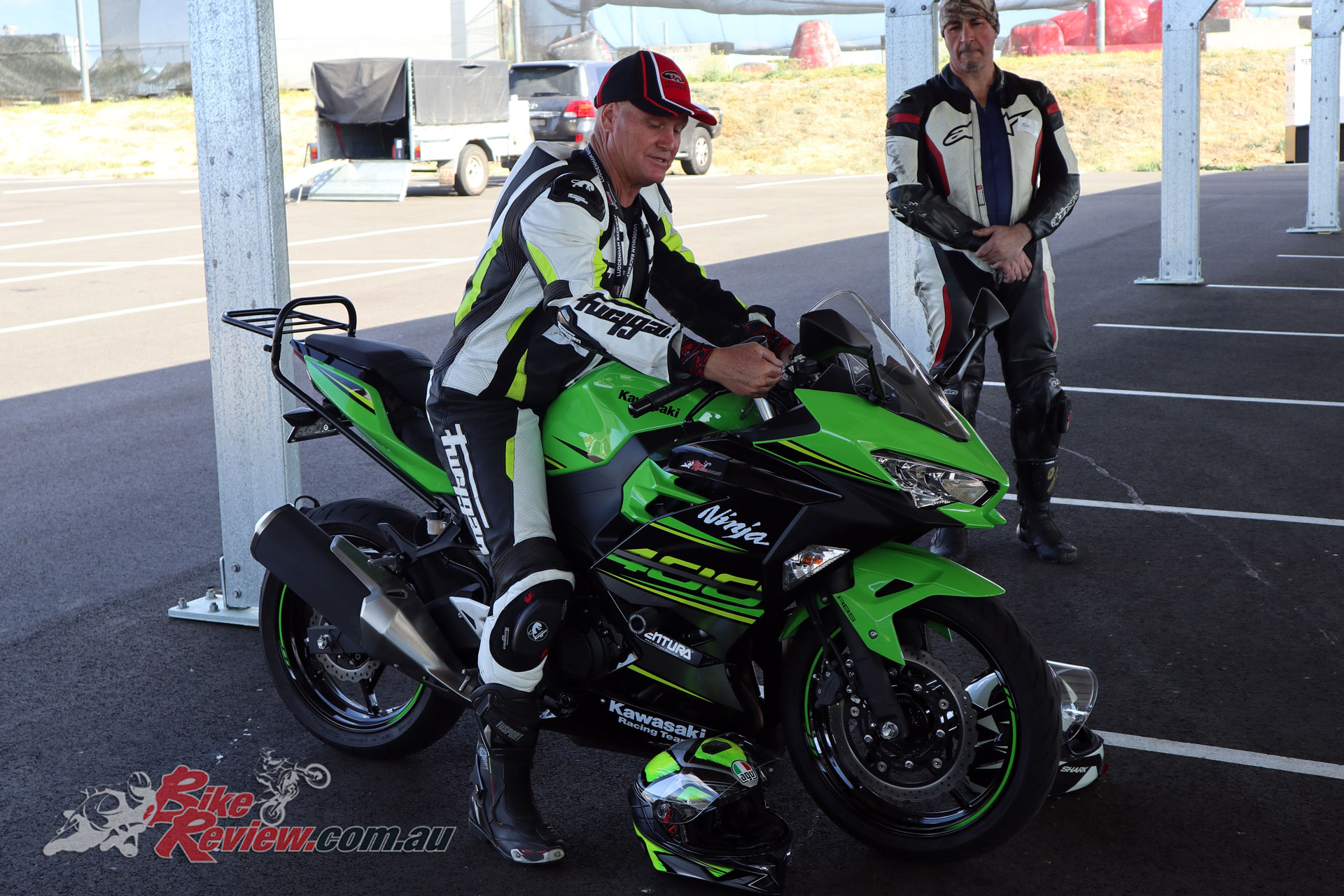
Bernie also demonstrated tips such as lever positioning and angle, and brake pedal positioning for ideal control
These are things that no one tells you, especially when you first start out. Add to that the experience you get riding on the track and it’s a winner. Each level of the Top Rider course at Luddenham Raceway will set you back $495 on weekdays and $580 on weekends. Check out the Top Rider website for a full price list, course outline and to sign-up.
Level 2 is the next stage to braking and cornering that aims to control your line and speed. It covers front tyre grip, steering geometry and positioning as a start. If you asked me whether I would sign-up for Level 2 my immediate answer is yes, with a ‘but’.That ‘but’ is not right away, but in the coming months. Although the course has made me more confident in my riding it has made me aware of how much more practice I need!

Following a great Level 1 experience at Top Rider Samantha’s said she’ll definitely be back for Level 2, once she’s practiced all those riding strategies
If I want to keep up in the next round I might do a spot of homework – I’m not mechanically minded so some stuff goes over my head. Bernie and the team introduced me to thinking about how bikes operate – we started with the clutch – and I’m shocked (not really) by how little I know.
I recommend any motorcyclist takes a look at the courses Top Rider offers. My advice if you do join a Top Rider course is to simply ask as many questions as you can – they’ll know the answer, and I can almost guarantee everyone else in the group wants to know as well.
Top Rider Advanced Rider Training
The Top Rider Advanced Rider Training courses include six different levels, which you progress through and build on different skills, with some of the higher levels being tailored for track and race riders.
Level 1-3 are designed for all riders, including Learner riders, while Levels 4 and 5 are for track and racing, with Level 6 aimed purely at racing.
The days include technical classroom sessions, with hands-on demonstrations, with five track sessions for practical application of the strategies being taught, as well as feedback. There’s also demonstrations of the drills and skills being taught before riders put them into practice.
During drills there is personalised feedback, and small classes of four to 12 riders ensure a great coach to student ratio. Lunch is also included, with students required to bring their own motorcycle, with a full tank of fuel, and full leathers.
See the Top Rider Australia website for more information.


